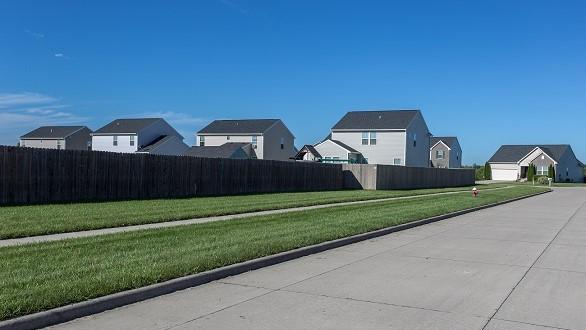An increase in construction in more suburban neighborhoods is being driven in large part by the Coronavirus outbreak, builders say.

Following buyer demand, builders are displaying a notable suburban shift in the construction of new single-family homes. The only region posting a second-quarter gain in single-family construction was small metro suburbs, the National Association of Home Builders’ reports on its blog, Eye on Housing.
Home construction in small metro suburbs increased 10.6% in the second quarter on an annual average basis. The fastest-growing places for apartment construction in the second quarter were also being found in exurbs, small metro suburbs, and rural areas.
Prior to the pandemic, more than 55% of the U.S. population lived in “large metro areas,” yet these areas comprise of only 8.2% of all land in the U.S., NAHB reports. As consumers look to spread out, that opens up opportunities for builders, who’ve long been constrained by lot shortages in urban core areas.
But “given large metro areas’ higher susceptibility to the challenges created by the public health crisis of COVID-19, prospective single-family home buyers sought less densely populated areas,” NAHB reports on its blog. As a result, lower density housing markets now represent half of all single-family construction on an annual basis. On the other hand, large metro core areas saw a decline of nearly 18% compared to the second quarter of 2019.
Small metro suburbs are defined as “outlying counties” outside from urban areas that have less than 1 million population.
Following the initial outbreak of COVID-19 in the U.S., nearly a third of Americans said they were considering moving to less densely populated areas, according to a Harris Poll conducted of more than 2,000 U.S. adults from April 25 to 27. Those living in urban areas (43%) were twice as likely than suburban (26%) and rural (21%) residents to say they had browsed real estate websites for homes and apartments to buy.
Single-family construction is growing faster in low-density markets as existing home affordability constraints remain, a growing share of the workforce is at home part- or full-time, a rising need for households to seek out greater affordable housing further out from large metro cores, and density concerns sparked over the virus, NAHB says.
Source: “Suburban Shift for Home Building in Q2 2020,” National Association of Home Builders’ Eye on Housing blog (Sept. 1, 2020)
